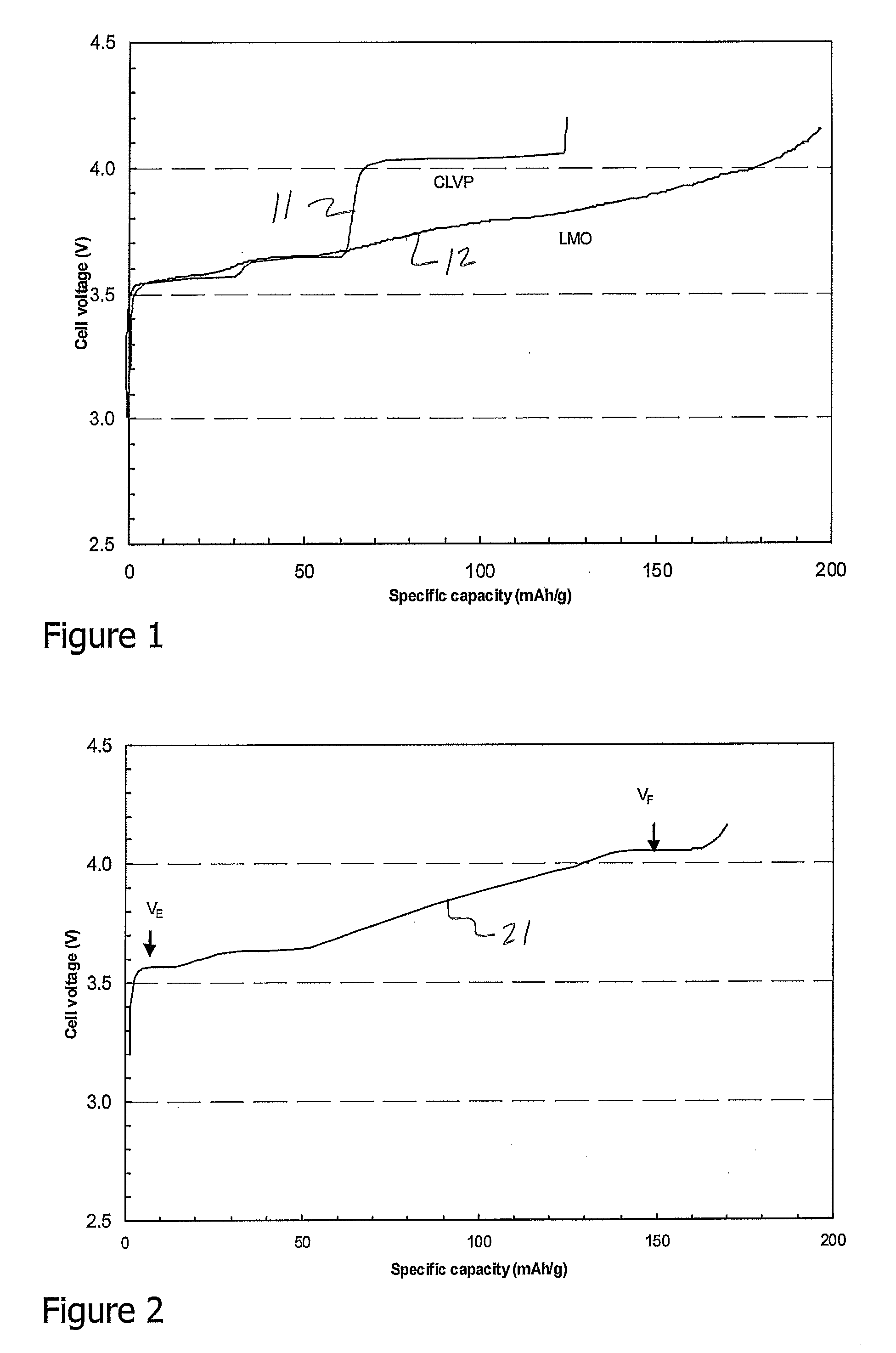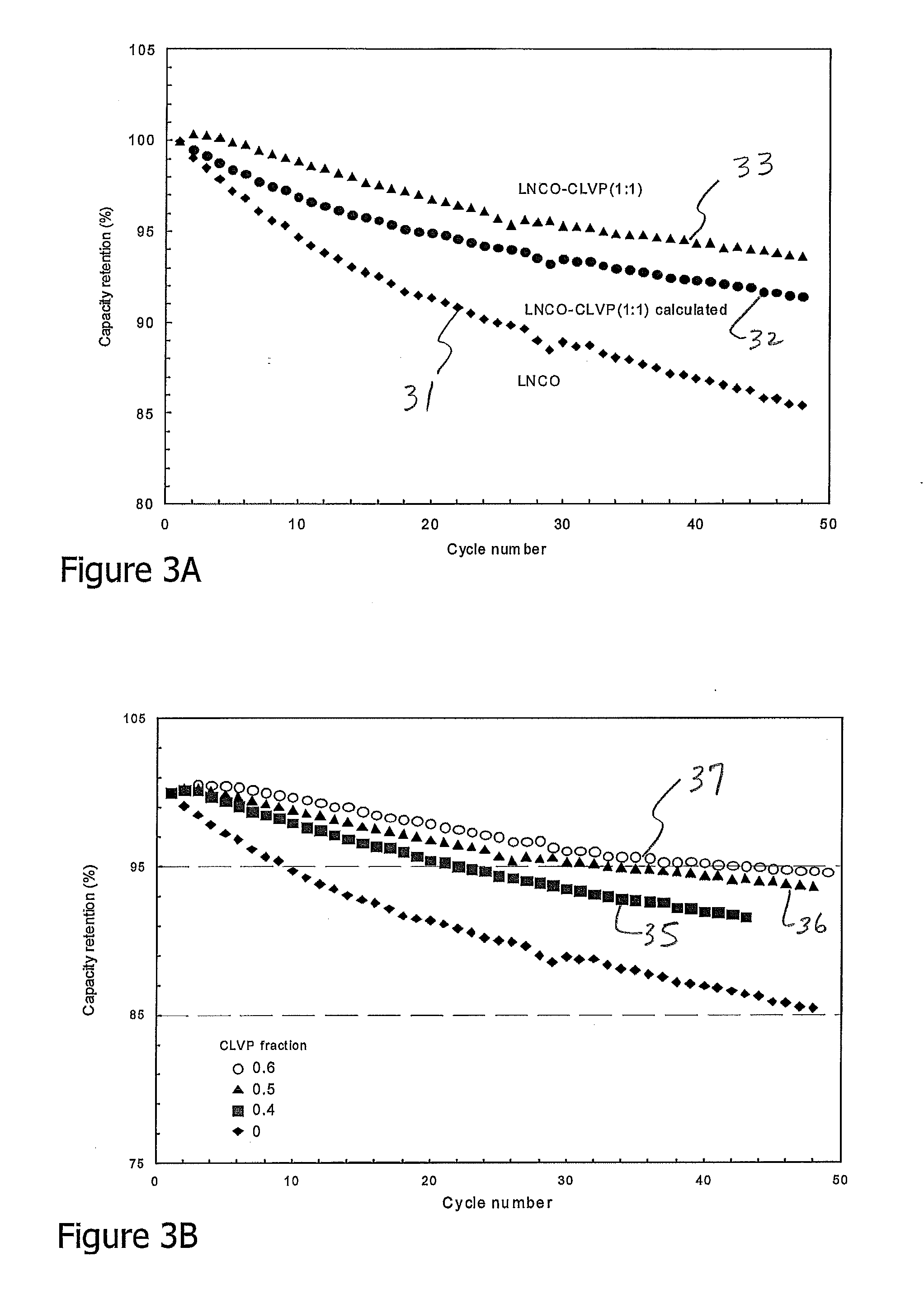Process for making composite lithium powders for batteries
a lithium powder and battery technology, applied in the direction of nickel compounds, non-metal conductors, cell components, etc., can solve the problems of discouraging commercial implementation of these materials and likely to be a very large payo
- Summary
- Abstract
- Description
- Claims
- Application Information
AI Technical Summary
Benefits of technology
Problems solved by technology
Method used
Image
Examples
examples
[0112]Electrochemical tests—Coin cells (standard CR2025 size) were used to evaluate the electrochemical properties of the mixture materials as cathode for lithium ion batteries. The counter electrode in the coin cells was lithium metal foil, and the electrolyte was 1 M LiPF6 in a solvent mixture (40% ethylene carbonate, 30% dimethyl carbonate, and 30% diethyl carbonate).
[0113]All the electrodes were prepared with the following steps: step a) the lithium metal oxide was ground with carbon black and graphite powder with a mortar pestle by hand and then mixed with CLVP, b) the resulting mixture was mixed in the binder solution (n-methyl pyrrolidinone or NMP) to form a slurry, c) the slurry was mixed in a plastic bottle by shaking in a paint mixer for 15 minutes, d) the slurry was cast on a copper foil and then dried on a hot plate for at least 30 minutes, e) the dried films were trimmed into strips of 5 cm in width, and then roll-pressed twice. The dried solid composition was 89% activ...
PUM
| Property | Measurement | Unit |
|---|---|---|
| voltage | aaaaa | aaaaa |
| voltage | aaaaa | aaaaa |
| cell voltage | aaaaa | aaaaa |
Abstract
Description
Claims
Application Information
 Login to View More
Login to View More - R&D
- Intellectual Property
- Life Sciences
- Materials
- Tech Scout
- Unparalleled Data Quality
- Higher Quality Content
- 60% Fewer Hallucinations
Browse by: Latest US Patents, China's latest patents, Technical Efficacy Thesaurus, Application Domain, Technology Topic, Popular Technical Reports.
© 2025 PatSnap. All rights reserved.Legal|Privacy policy|Modern Slavery Act Transparency Statement|Sitemap|About US| Contact US: help@patsnap.com



